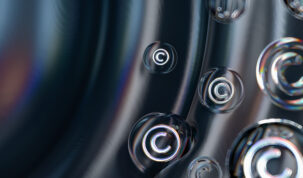The Enlarged Board of Appeal of the EPO clarifies, in decision G 2/08 of 19 February 2010, that it is possible to obtain a patent for a medicament known to treat a specific illness for use in a different method for treatment of the same illness. However, such inventions may not be claimed in the format of so-called Swiss-type claims.
The European Patent Convention, EPC, specifies that European patents shall not be granted in respect of methods for treatment of the human or animal body by surgery or therapy and diagnostic methods practised on the human or animal body (hereafter referred to as methods for treatment). However, the patentability of any known substance or composition shall not be excluded for use in such a method. These provisions in combination with case law, in particular the earlier decision from the Enlarged Board of Appeal G 5/83, have led to the rather complicated way of protecting the second medical indication called the Swiss-type claim: Use of a substance or composition X for the manufacture of a medicament for treatment of disease or condition Y.
Since December 2007, the EPC specifies that any known substance or composition can be patentable for any specific use in methods for treatment. The intent is to eliminate any legal uncertainty regarding the patentability of further medical uses and to permit purpose-related product protection for each further medical use of a substance or composition already known as a medicine. Thus, it is now possible to formulate claims on a second medical indication as: Substance or composition X for use in the treatment of disease or condition Y. However, the EPC does not define the nature of such further therapeutic use of a known substance or composition other than by saying that it must be “specific”. It does not give any definition of the degree of distinctiveness required from the new use in order for it to be “specific”, and in particular whether a new method for treatment of the same disease or condition could constitute such a ”specific” use.
Decision G 2/08 relates to a European patent application with Swiss-type claims directed to a known substance for use in treatment of the same condition as disclosed in prior art. The patent application was refused on the grounds of lack of novelty and because it related to a method for treatment. The only novel claim feature resided in a specific dosage regimen. The remaining issue was whether a dosage regimen feature can be recognized as a further medical indication within the meaning of the EPC.
The Enlarged Board of Appeal confirms the previous liberal decision T 1020/03 and comes to the conclusion that the new use does not need to be the treatment of another disease. The “specific” use may thus reside in something else than treatment of a different illness, and there is therefore no reason to treat a feature consisting of a new dosage regime of a known medicament in any other way than one would treat any other specific use acknowledged in prior case law. It is stressed that the claimed definition of the dosage regime must not only be verbally different from what is described in the art but must also reflect a different technical teaching.
During the revision of the EPC, it was considered that this purpose-related product protection should give an equivalent protection to that of Swiss-type claims. It is therefore very interesting to note that the Enlarged Board of Appeal in the present decision concludes that “It appears that the rights conferred on the patentee by [purpose-related product claims] … are likely broader [than Swiss type claims] …”.
What might be most noteworthy and surprising in this decision is that the Enlarged Board of Appeal states that for a claim with subject-matter rendered novel only by a new specific use of a medicament, such claim may no longer have the format of a so called Swiss-type claim. The Enlarged Board of Appeal notes that patents have been granted and many applications are still pending seeking patent protection for Swiss type claims. Therefore, in order to ensure legal certainty, the abolition of this possibility shall have no retroactive effect. It appears that the prohibition on Swiss-type claims will only apply to applications having a date of filing or priority more than three months after publication of the present decision in the Official Journal of the EPO. As soon as this time limit is fixed, this information will be provided on our website.
Inga-Lill Andersson, European Patent Attorney
Mikael Henriksson, European Patent Attorney
Maria Stenbäck, European Patent Attorney




